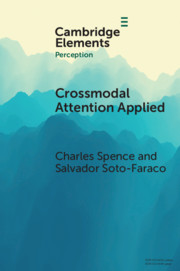Crossmodal links in spatial attention were studied in an
experiment where participants had to detect peripheral tactile
or visual targets on the attended side, while ignoring all stimuli
on the unattended side and in the currently irrelevant modality.
Both relevant locations and relevant modalities were specified
on a trial-by-trial basis by auditory precues. Spatial orienting
in the cue–target interval was reflected in anterior
negativities and occipital positivities contralateral to the
cued side, either when vision or touch was cued as relevant.
These effects resembled previously reported ERP modulations
during shifts of visual attention, implicating supramodal
mechanisms in the control of spatial attention and demonstrating
their independence of cue modality. Early effects of spatial
attention on somatosensory and visual ERPs were of equivalent
size for currently relevant and irrelevant modalities. Results
support the idea that crossmodal links in spatial attention
are mediated by supramodal control mechanisms.


